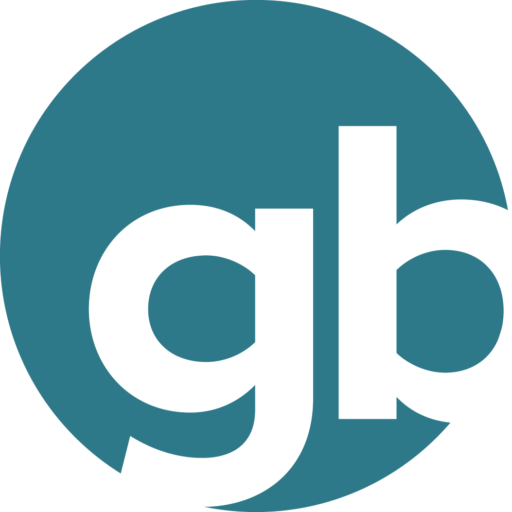The junior market of the London Stock Exchange (LSE) packs quite a punch these days. Close to 1,700 companies trade on the Alternative Investment Market’s (AIM) index, with a combined market value of £108.1 billion. And it’s not just British companies beating a path to the AIM door. Around 328 are from abroad.
While 2006 was a bumper year for new issues listing on AIM (362), 2007 is likely to be a record year for secondary fundraisings. More than £7.8 billion has been generated by companies raising additional cash for expansion purposes in the first eight months of the year, compared to £3.8 billion for the equivalent period in 2006.
That said, 173 new companies have listed in 2007, raising £5.2 billion in the process, demonstrating AIM’s attraction to private investors, big global investors and ambitious entrepreneurs.
In terms of size, around 21 per cent of companies on AIM are valued between £10 million and £25 million; 15 per cent at £25 million to £50 million; and 13 per cent at £50 million to £100 million.
Interestingly, just over ten per cent have a market cap of £5 million to £10 million, which illustrates that AIM investors have a strong appetite when it comes to start-up and ‘micro-cap’ enterprises.
If you’re considering choosing AIM as a place to expand, you need to know that it is not a cheap club to join. Steve Howell, the former BBC journalist who floated acquisitive marketing and public relations group Freshwater in August, confesses it cost his business £550,000 in fees and commissions.
‘That isn’t efficient in terms of pure fundraising,’ he says, but adds that it was worth it because ‘AIM brought us listed status, which helped our long-term strategy and paves the way for future funding’. Moreover, Howell wanted to raise £4 million for growth and had no trouble getting it.
Veteran travel entrepreneur Roger Allard, who brought cruise company All Leisure to AIM for £20 million of new money (and pocketed £10 million in the process) at the height of the September credit crunch, recalls the company had considered going to venture capital groups as an alternative to AIM.
On investigation, however, ‘we reckoned we could do it faster by a stock market flotation’. Also, such are the tough terms imposed by venture capitalists, ‘we realised we could retain more of our shares taking the flotation route’.
Most companies say the overall cost of floating on AIM can be between £250,000 and £500,000 in fees to advisers, plus a broker’s commission of four to five per cent on the new money raised, though in certain circumstances the percentage varies. Rob Cotton, chief executive of Manchester-based IT services group NCC urges a robust approach to negotiations: ‘Torture advisers – try to put caps on fees and contingent fees. Haggle when they quote a fee and take 33 per cent off as a starting point for negotiation.’
Even after all that, your company will have to pay up to £200,000 a year or so to stay on the market, in fees to brokers, nomads and other advisers, costs of complying with stock exchange disclosure rules, and other items.
But London is at least cheaper than the US in corporate governance. It’s estimated that you can save up to £200,000 a year not having to comply with the US Sarbanes-Oxley governance rules. Scott Pearson, chief executive of US outfit Protonex Technology, suggests his company is £1 million a year better off without US red tape.
Overseas investors
As previously mentioned, London’s junior market remains the place of choice for adventurous overseas businesses (see page 63). The US leads with its number of entrants (92), but the diversity grows year on year. Companies are coming from India (23), Russia (22), Israel (21), Germany and South Africa (18 each). According to the International Investors on AIM report, published by Business XL’s sister publication Growth Company Investor, the best-performing international company this year hails from Russia – oil giant Sibir Energy has witnessed its shares advance 5,335 per cent since it floated in 1997.
Pearson brought his Massachusetts-based fuel cell company to AIM last year, ‘as the most effective market to finance growth’. While Protonex has raised more than £20 million in two rounds of fundraising on AIM and is now valued at around £60 million, ‘there is no real market in the US for a company of [our] size’.
Cash incentives
AIM owes its popularity to the tax breaks it offers investors and companies (see page 35) and the ease at which entrepreneurs can execute growth strategies – it is cheaper and quicker to conduct business-transforming acquisitions on AIM than on the Official List.
Of course, its other attraction is one we have already alluded to, namely its deep pools of investment cash.
Research from Growth Company Investor revealed that institutional investors own £55 billion worth of AIM shares, or 46.2 per cent of the market.
Selling your business honestly
When you embark on your AIM journey, one of the most difficult tasks is raising the funds, otherwise known as ‘the investor roadshow’. This is when you visit investment institutions, explaining persuasively why they should put their money into your venture.
You need to ensure your company is ready for this major step. Skeletons in the cupboard will be found and autocratic and secretive entrepreneurs – no matter how brilliant they may be – are out of favour in today’s regulated public markets.
AIM remains a light touch in terms of regulation compared to its Full List parent, but entrants are still bound by UK Company Law. Moreover, there is the LSE’s Combined Code on Corporate Governance, and although these are recommendations and guidelines as opposed to legally binding rules, many advisers enforce them as a condition of representing you.
Among other things, the Combined Code means you are expected to appoint two effective non-executive directors, who ideally should have experience of your sector and the public markets.
In terms of legal requirements, companies must report their financial results twice a year and keep the market informed of significant events, usually through their nominated advisers, which are the lynchpin of AIM’s system of self-regulation. Andrew Kitchingham, corporate finance director at stockbroker Brewin Dolphin, warns ‘don’t try to come to market too early’.
He says: ‘The corporate scene is littered with companies that thought they could live in the public market. We will always carry out in-depth due diligence of the quality of a company’s board, its non-executive directors and management.’
Whatever the formal exchange requirements, Kitchingham argues companies should ideally have ‘a minimum three-year track record of good growth in turnover and profits. They must keep their nomads and brokers fully in the know’.
While AIM does have many small ventures, investors are increasingly looking for companies with a basic market cap of around £20 million to £30 million. Claims Kitchingham: ‘Lots of brokers out there are “volume merchants”, out to get corporate finance fees and placing commissions from anyone, but we are concerned if a company is too small.’
As AIM has matured over the past few years, its wilder entries, notably those hoping to strike it lucky with groundbreaking, disruptive technology or highly speculative mining concerns, are fewer. Kitchingham suggests a company whose free float in shares after listing will be less than £10 million is not suitable for AIM. ‘Smaller companies would do better to look to private equity,’ he says.
That would almost certainly be a better route if your real goal is to cash in your chips and take your money off the table, rather than carry on growing your company. The market is content for founders and directors to realise some of their holdings, if only to release shares to be traded in the market, but naturally, floating for an exit does not inspire confidence.
Cotton from NCC, which raised a chunky £39 million on AIM in 2004 and moved to the full LSE this year, agreed a ‘lock-in’ with his advisers, whereby directors could not sell their shares for at least six months after the float.
‘They wanted two years. We wanted no time at all and we compromised,’ recalls Cotton, adding that he’d ‘expect the management team to commit themselves for 12 months anyway’.
Allard had no lock-in at All Leisure, but at Freshwater, ‘everyone was locked in’, says Howell. ‘We got an orderly market agreement [limiting what could be sold over what period], so we could tell investors it was a long-term proposition and not for a quick buck.’
At Brewin, comments Kitchingham, ‘we try to raise some money for a company’s founders, say a quarter to a third of their holdings. Apart from that, we impose a “hard lock-in” for one year, with no share sales allowed at all, and a “soft lock-in” for a second year, in which sales must be by agreement with the company.’
Nomads and brokers
To float on AIM, you will need a lawyer, accountant, a nomad and a broker. It’s the nomad that will steer you through the regulatory thickets and ensure that your company conforms to market requirements.
Your broker, who is traditionally from the same company as your nomad, is easily the most important adviser for the simple reason that they’re who raise the money you’re seeking.
Growth Company Investor conducted research that found the top five brokers by funds raised for new issues between January and June 2007 (see bar graph, p35) were Numis (£355.6 million), Panmure Gordon (£303.4 million), Deutsche Bank (£289.2 million), Collins Stewart (£285.0 million) and Cenkos Securities (£213.3 million).
The top five nomads by post-float share price performance were John East (now part of Merchant Securities), Beaumont Cornish, Hanson Westhouse, Nabarro Wells and WH Ireland, while the top five brokers by share price performance were Mirabaud Securities, John East, Beaumont Cornish, Hanson Westhouse and Ellis Stockbrokers.
Some firms have particular sector strengths, such as support services, healthcare and recruitment at Brewin Dolphin, and natural resources at WH Ireland. Despite some implicit conflict of interests, many companies use the same firm as nomad and broker – ‘it is simpler and can save £100,000’, argues one – and some City firms, including Brewin, will not act as one without the mandate to be both.
AIM’s dress code
If there’s one item guaranteed to give you the biggest headache on your AIM journey, it’s your admission document. Howell confesses to being surprised at some of its requirements, such as having to verify every claim you make about your business and the market’s potential for growth. ‘It would’ve been nice if someone had told us about that sooner,’ he reflects, as opposed to burning the midnight oil as he pulled the information together before the float.
You will need expert advice to produce an admission document, with full information about your company, its strategy, track record and material contracts, and about your directors. James Joyce, corporate finance director of broker WH Ireland, warns: ‘If there are concerns about any part of this, get them sorted out beforehand or due diligence will scupper the float.’
This process also requires an accountant to prepare a ‘short-form’ report, with a three-year financial summary, and a more-detailed ‘long-form’ report, looking at financial controls and other issues. The information you produce must be less than nine months old at the time of admission and it’s worth bearing in mind that accounts are now required to be produced in accordance with International Financial Reporting Standards.
Choose wisely
For the key broker/nomad, ‘chemistry is as important as getting the right price’, insists Howell, who says the broker he decided upon impressed because of the realistic valuations quoted, rather than ‘promising the earth’.
Andrew Monk of broker Blue Oar Securities believes in the personal approach: ‘Go and have a pint with the sales desk to get the best results. You want to deal with people you can have a beer with after 70 meetings.’
Obviously, you want to achieve the best value you can for your company and to do that, timing is of the essence. You’ll have to prepare your company and board to be floatable, but the process can take between three and six months, say advisers.
On valuation, it makes sense to agree a price range with your broker and don’t expect to achieve the top of the range. If you’re overvalued, then you may never recover from a share price correction in the early days (advisers are often wrong, the market never is!). The best approach for a public venture post float is to under-promise and over-perform, garnering a solid reputation in the process.
A company coming to the market will not initially command as high a rating as an already quoted peer, unless it is riding the crest of a bull market sector frenzy. At Freshwater, Howell recalls, ‘established companies in our sector were trading at 14 times earnings, but we came out at under ten times’.
The pricing process requires steady nerves. Cotton cautions: ‘You have to walk into the valuation meeting with a strong stomach: it’s a game of double bluff.
‘When banks or brokers are touting for your business, they’ll flatter you like estate agents and then they’ll start to bring the price down. You have to set your own minimum and walk away if you can’t get it.’
Even so, it pays in the long run not to gouge investors for the last penny. They will want to see their shares rise in the market after the float and you may need their goodwill later if you want to a raise equity funds again or use your shares for a takeover or some other corporate deal.
‘Don’t try to screw your investors,’ says Blue Oar’s Monk. ‘They should be your friends.’ He adds that it is important to target the right type of institutional investor, those who are in for the long haul: ‘We want big names on the list. Don’t go to hedge funds, because they’ll fling it the next day.’






